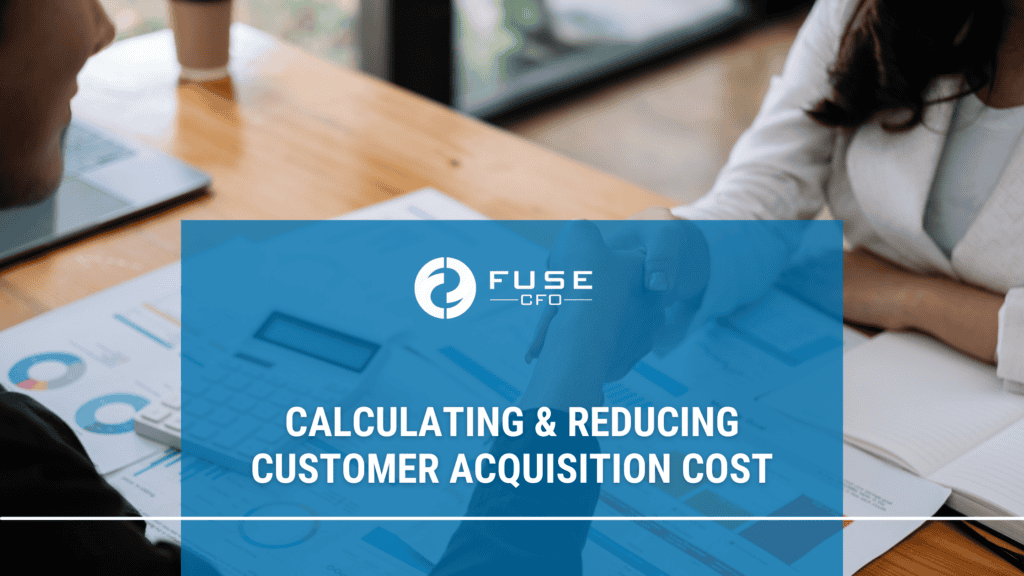
How much do you invest to bring on one new customer? Knowing that number, and optimizing your spend on marketing and sales is an essential part of maintaining your company’s health and long-term viability.
Knowing and tracking your Customer Acquisition Cost (CAC) is the first step to planning growth, maintaining profitability, and more. Here are a few ways to understand your own CAC and use it in your business.
To calculate your own Customer Acquisition Cost (CAC), first consider every recurring expense that goes toward marketing, promotions, sales, and onboarding a new customer. When you attend a trade show, include all the costs.
For a sales team of 5 people, include their salaries, commissions, bonuses, and benefits in your dashboard. Also, if you pay for Google ads, add that cost as a key metric to track. Make sure you find every expense that influences, leads to, or influences a new customer.
Exclude one-time expenses like website development or trade show booth construction, as well as ongoing operational expenses that support clients after they have been on-boarded.
Got a number? Great! Now divide those (total) costs associated with customers from the last year by the number of customers your business acquired during that same period. The result is the number of dollars you spend per new customer — or your Customer Acquisition Cost (CAC).
Your CAC is the one metric you should consult when planning and evaluating marketing strategies. Other measurements, like cost-per-impression or cost-per-click, have no bearing on your company’s financial health.
Only CAC can tell you whether one marketing strategy is more effective than another. Use it as the touchstone to compare marketing efforts, and take every opportunity to lower the cost to bring on new customers.
The flip side of how much you spend to get a customer is, of course, how much the customer spends with you! This metric is called the customer’s “lifetime value”, or LTV. It’s influenced not only by what you charge your customers but also by your average gross margin and how many times a customer re-orders from you.
To accurately measure LTV you need to know how much gross profit you made from them over their entire engagement with your company.
(Fortunately, QuickBooks and other accounting software can give you a “Sales by Customer” report which makes calculating LTV pretty easy. Remember to modify that account by multiplying revenue by your average Gross Margin percentage to calculate LTV. Don’t just look at the top-line revenue from each account.)
When you know both CAC and LTV, you’ll have the keys to understanding your long-term profitability. So long as LTV is greater than CAC (meaning your customers will spend more with you than you spend to find them!) your business is positioned to turn a profit over the long term.
Of course, you can imagine scenarios where your LTV is greater than your CAC, but you are still running at a loss. This can happen if your customers spend small amounts with you but continue to do so over a long period.
For example, imagine getting just one customer from a $30,000 trade show exhibit. If that customer only contributes $500 a month in gross margin, you may have a hard time paying for the trade show!
At the same time, however, if your average customer stays with you for more than 60 months, you will eventually earn back your trade show investment and your Lifetime Value will be greater than your Customer Acquisition Cost! This is a short-term gamble but could lead to long-term success.
Many fast-growing SaaS companies are built on the premise that short-term investment in sales and marketing (CAC) can produce long-term profits (LTV). These companies often attract Venture Capital investors who are betting on rapid growth to lead to future cash flow and high enterprise value.
You may never raise venture capital or even build a recurring revenue business; that’s okay. Knowing your CAC and LTV can still help you make everyday decisions like:
Start with some simple calculations and let the ratio of CAC to LTV be your guide to keeping the sales and marketing expenses in check.
Understanding and optimizing CAC is crucial for any business aiming to grow efficiently and sustainably. If you want to examine your company’s financial health and strategy more deeply, we’re here to help.
Schedule your free business analysis with us to explore how you can enhance your company’s performance and profitability.
© 2018-2025 Fuse Financial CFO & Accounting, LLC. All rights reserved.